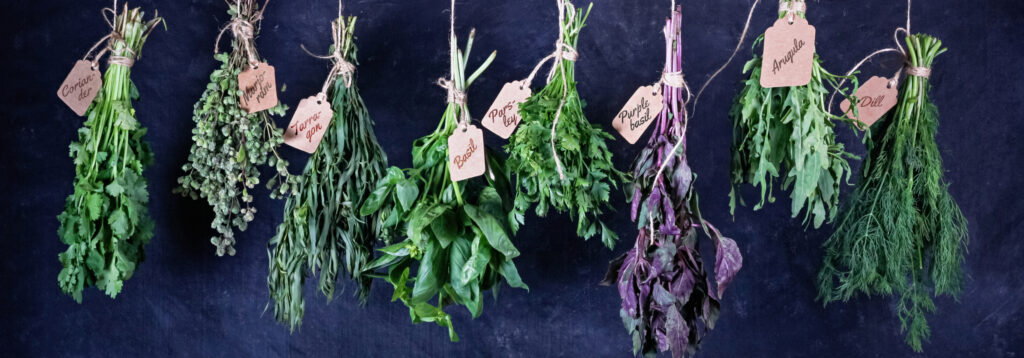Cultivating herbs in a nature-based garden can be both enjoyable and beneficial. Here are 13 tips to help you plant and grow great herbs.
- Select Suitable Varieties: Choose herb varieties that are well-suited to your local climate, soil type, and available sunlight. Consider factors like perennial versus annual growth habits and preferred moisture levels.
- Start with Healthy Soil: Prioritize soil health by enriching it with compost, organic matter, and natural amendments to provide a fertile and nutrient-rich environment for herb growth.
- Plan for Diversity: Incorporate a diverse range of herbs into your garden design to support pollinators, deter pests, and enhance overall ecosystem health. Mix culinary herbs with medicinal and aromatic varieties for added benefits.
- Plant in the Right Location: Place herbs in locations that match their specific sunlight, soil, and moisture requirements. Some herbs prefer full sun, while others thrive in partial shade, so plan accordingly.
- Provide Adequate Drainage: Ensure proper drainage for herb plants by amending heavy or compacted soils with organic matter and planting herbs in raised beds or containers if necessary.
- Water Wisely: Water herbs deeply and infrequently to encourage deep root growth and drought tolerance. Allow the soil to dry out slightly between waterings to prevent waterlogged conditions.
- Mulch: Apply a layer of organic mulch around herb plants to conserve soil moisture, suppress weeds, and regulate soil temperature. Mulching also promotes soil health by adding organic matter as it decomposes.
- Avoid Synthetic Chemicals: Opt for natural pest control methods and organic fertilizers to maintain a healthy balance in your nature-based garden. Avoid using synthetic pesticides and herbicides that can harm beneficial insects and soil organisms.
- Prune Regularly: Prune herb plants as needed to encourage bushy growth, maintain shape, and remove any dead or diseased foliage. Regular pruning also helps improve airflow and reduce the risk of pest and disease problems.
- Harvest Thoughtfully: Harvest herbs regularly to encourage new growth and prolong the harvesting season. Use sharp scissors or pruning shears to snip stems cleanly, and avoid harvesting more than one-third of the plant at a time to ensure continued vitality.
- Encourage Pollinators: Plant flowering herbs such as lavender, bee balm, and oregano to attract bees, butterflies, and other pollinators to your garden. Pollinators play a crucial role in ecosystem health and help increase herb yields through pollination.
- Companion Planting: Use companion planting techniques to enhance herb growth and deter pests naturally. For example, planting aromatic herbs like rosemary or thyme near susceptible plants can help repel pests and improve overall plant health.
- Save Seeds and Propagate: Save seeds from heirloom herb varieties to preserve genetic diversity and adaptability in your garden. You can also propagate herbs from cuttings or divisions to expand your herb garden without relying on store-bought plants.
By following these nature-based gardening practices, you can create a vibrant and productive herb garden that contributes to the health and biodiversity of your overall garden ecosystem.
